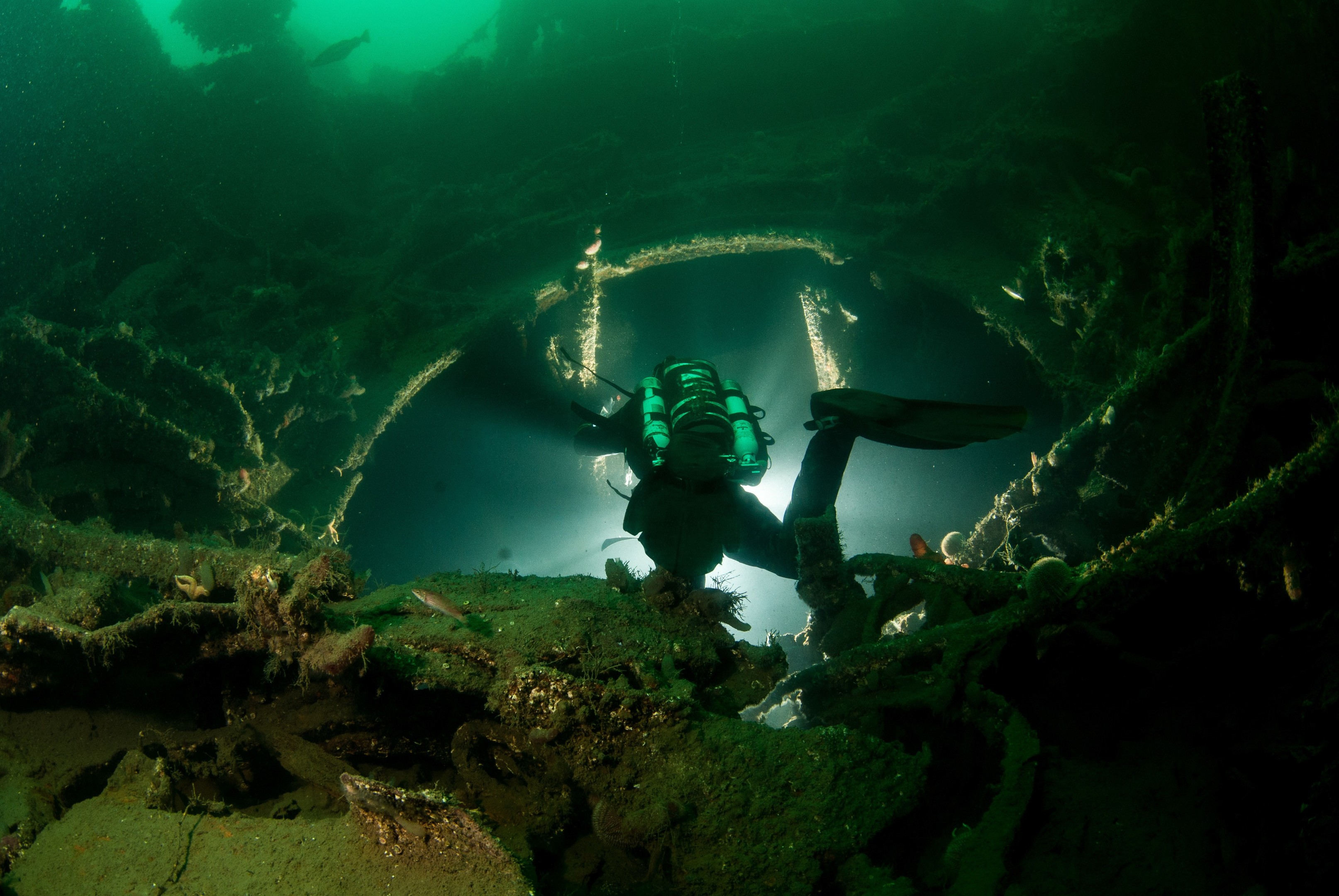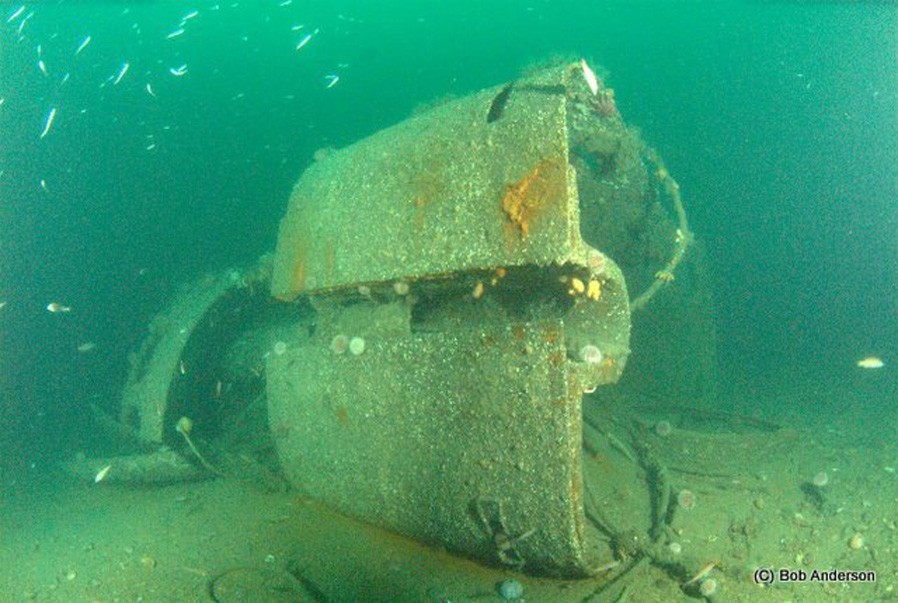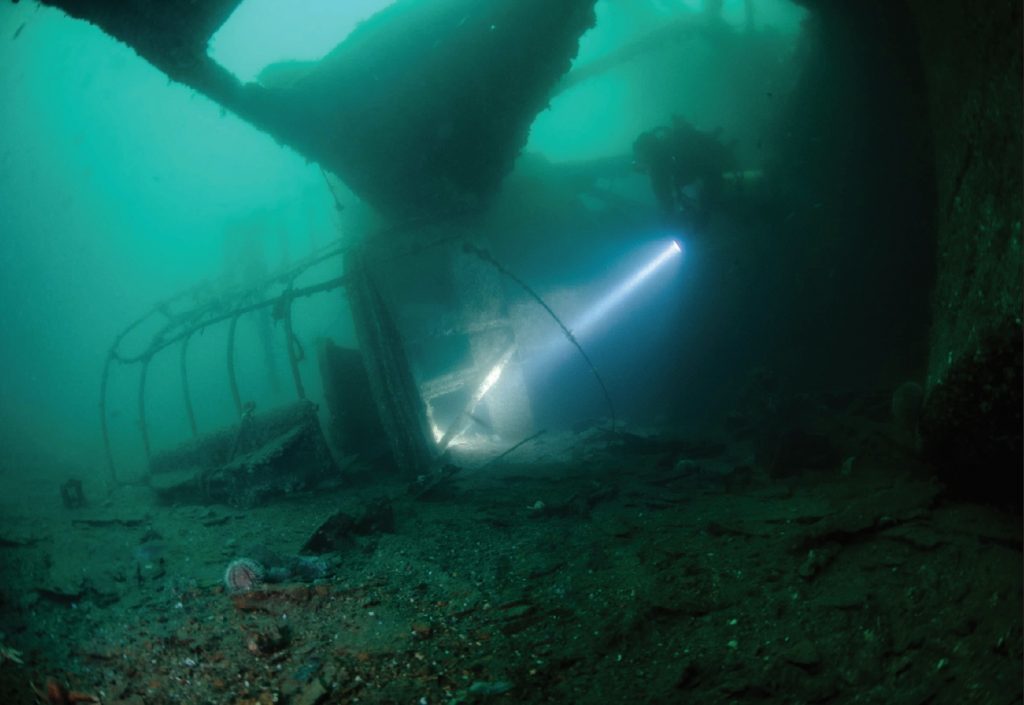
IT’s an eerily spectacular underwater graveyard – the “single greatest act of naval suicide the world has ever seen”.
Nearly 100 years on, the wrecks of the scuttled German Fleet attract thousands of underwater tourists to Orkney each year bringing millions of pounds to the economy.
But in the run-up to the centenary of the scuttling of the fleet in Scapa Flow, top diver Rod Macdonald says that many of the once proud ships are disappearing with the ravages of time.
Rod has updated his seminal diving bible to the area with spectacular photographs, enhanced digital scans and illustrations.
But the former Stonehaven Lifeboatman, who has been diving Scapa Flow for 35 years, says that while some are rusting, the decay has opened up a window of the wrecks’ once-out of reach interiors.
On June 21, 1919, 52 interned warships of the Imperial German Navy High Seas Fleet were scuttled at Scapa Flow to avoid them falling into British hands – nine crewmen lost their lives.
“It was, and still is, the single greatest act of naval suicide the world has ever seen,” says Rod in Dive Scapa Flow.
“Over the course of the decades, the majority of the warships were raised, eight complete ships of the original High Seas Fleet on the seabed still wait to be explored.
“Shipwrecks decay and collapse naturally with the passing of time – and those who are familiar with the Scapa Flow wrecks will be aware of major changes in many of the wrecks.
“When I first started diving,the German First World War wrecks in the early 1980s were still recognisable as warships – hulls, superstructures, bulkheads all looked strong and sturdy. The wrecks looked like ships that could float, and many divers commented that it was almost impossible to get inside.
“Fast-forward to today, and the cruisers have opened up – large sections of the ships that we saw in the ’80s have turned to dust and completely disappeared. The pace of collapse and change with the cruisers seems to be accelerating.
“The sturdy German battleships have stood the test of time best of all and are little changed in the 35 years I’ve been diving them.
“Perhaps the most visual change has been in the light cruiser Dresden, which lies on her port side in 25 to 38 metres of water.
“The whole deck has now fallen outwards and downwards, opening up the innards of the hull into one large common space.”
Rod says the rate of decay and collapse is so fast that the wreck illustrations and point cloud images in his book “are not, and cannot be, updated every year to keep pace: they are a snapshot of the wreck at a moment in time.”
But he added: “For all that recreational wreck-diving in Scapa Flow is now more than 40 years old, you would think Scapa Flow had no secrets left to reveal – but not so!
“The last few years have been a time of discovery unlike anything we have seen here of late thanks to sonar scanning of the seabed by Sula Diving and others.
“Three long-lost drifters and a steam pinnace from World War I were located in the Flow in 2015/2016, and one of the torpedoes fired by Gunther Prien in U47 at Royal Oak was found lying on the seabed where it had come to rest after its run.
“It was later destroyed by Royal Navy divers.
“A Second World War Grumman Wildcat naval fighter-bomber was finally located in 2014 – and there is still much more to be found.
“There is also a First World War U-boat, unconnected with the fleet – the last U-boat sunk in action during the First World War.
“Today this concentrated profusion of wrecks in one relatively small area has made Scapa Flow one of the top wreck diving locations in the world.
“Where else can you dive on such a collection of German warships from the First World War so close to land?”
Also featured is a chapter on HMS Hampshire which sank off Orkney, 101 years ago. Secretary of State for War, Field Marshal Lord Kitchener was among the lost crew.
The Hampshire left Scapa Flow in Orkney on June 5, 1916, for a voyage to Archangel, in northern Russia. But she struck a mine laid by a German submarine off Marwick Head.
Earl Kitchener, who was best known as the face of the “Your Country Needs You!” recruiting posters, was travelling for talks to ensure the Tsar remained an ally.
Research by local historians Brian Budge and Andrew Hollinrake has revealed the final death toll was 737.
Scapa Flow’s war graves, HMS Royal Oak, torpedoed at the beginning of WWII and HMS Vanguard, which blew up in a magazine explosion in 1917 are off limits to divers but feature in the book.
Rob Ward from the village of Muchalls, in Aberdeenshire, sketched the book’s illustrations.
Professor Chris Rowland of the University of Dundee has applied advanced techniques to scans taken of the wrecks in 2008.
Dive Scapa Flow by Rod Macdonald, Whittles Publishing, Dunbeath, Caithness, is priced at £30. Visit whittlespublishing.com

Enjoy the convenience of having The Sunday Post delivered as a digital ePaper straight to your smartphone, tablet or computer.
Subscribe for only £5.49 a month and enjoy all the benefits of the printed paper as a digital replica.
Subscribe
